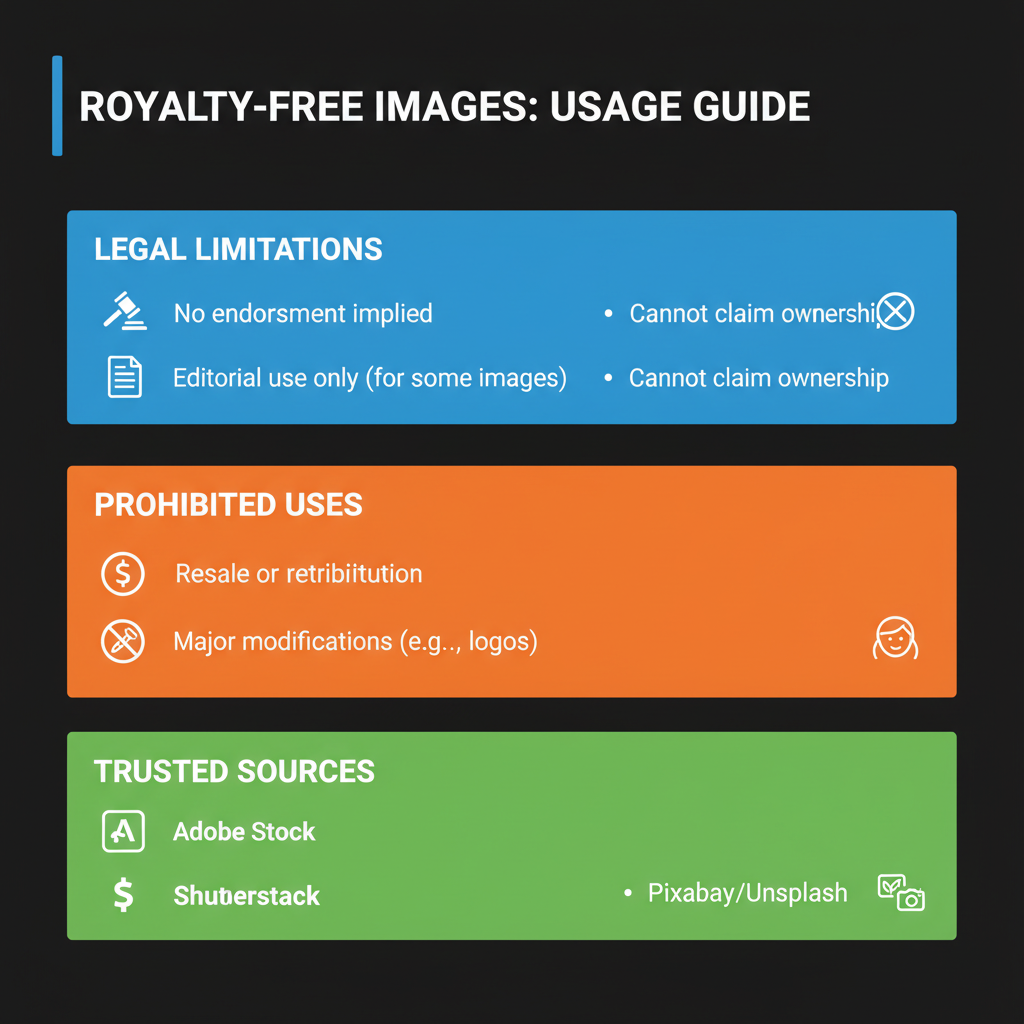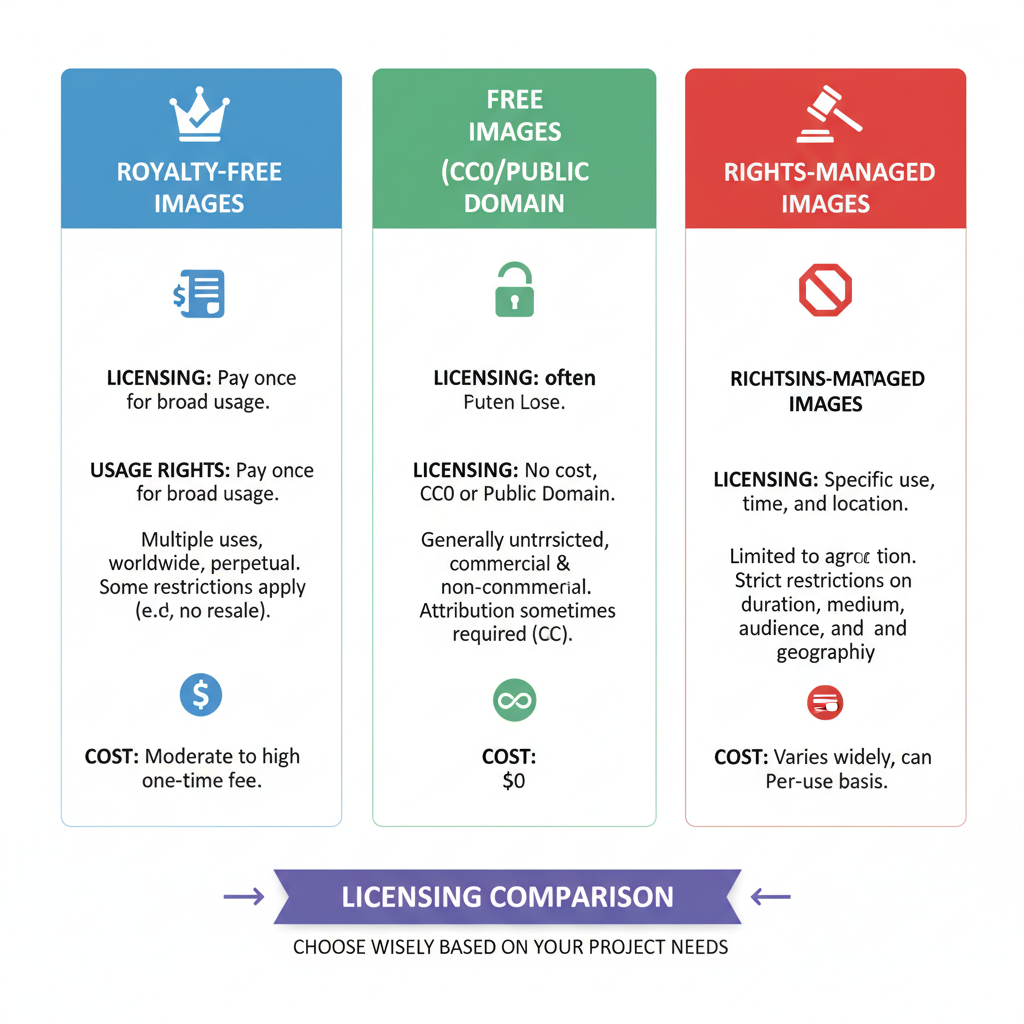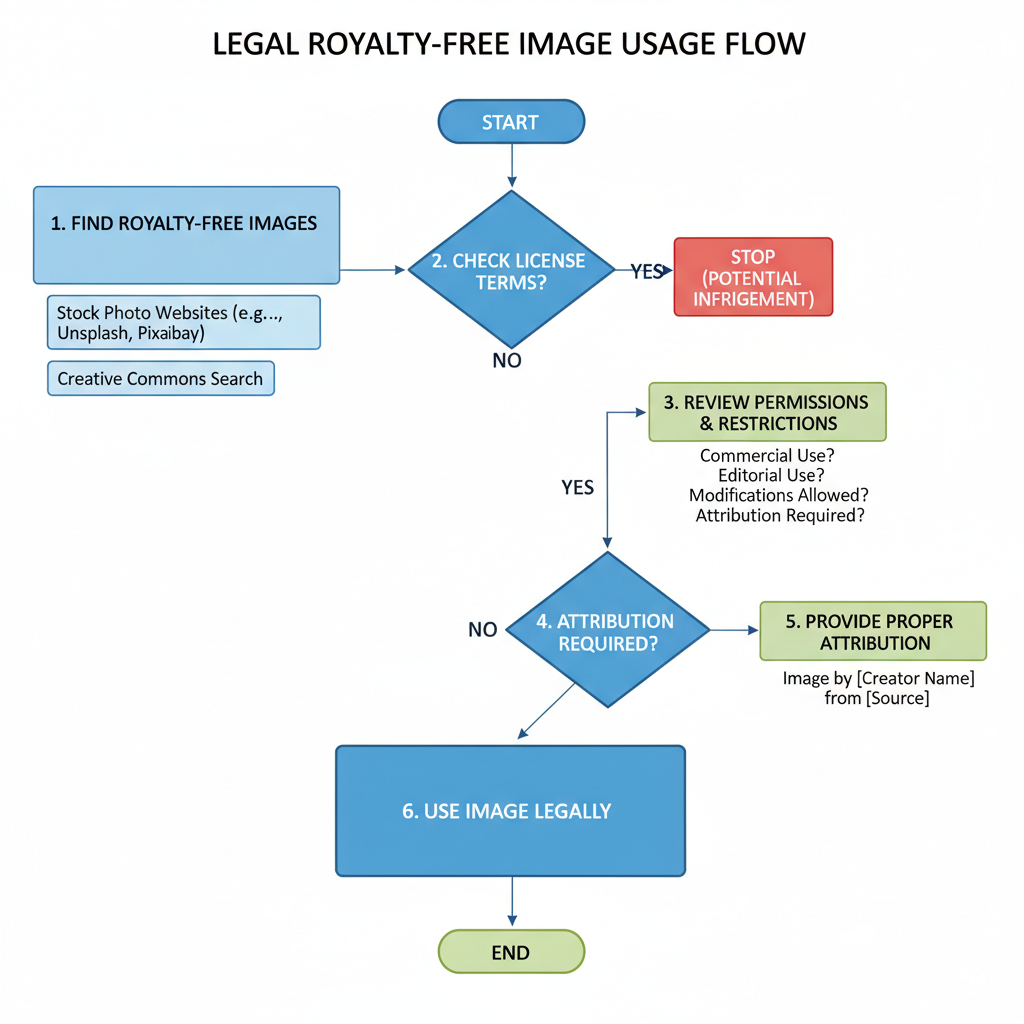Royalty Free Images Meaning and Legal Usage Guide
Learn the true meaning of royalty free images, their licensing terms, rights, restrictions, and tips to use them legally without copyright issues.

Royalty Free Images: Meaning, Legal Use, and Best Practices
If you create content for blogs, websites, social media, or marketing campaigns, you’ve likely encountered the term royalty free images. Many people interpret it as “free to use anytime” — but that’s only part of the story. In reality, royalty free refers to a specific licensing model that can save money and streamline projects, while still requiring careful attention to copyright rules. Understanding royalty free images: what does it mean and how to use them legally is key to avoiding costly mistakes and maintaining brand integrity.
This guide explains the definition, licensing terms, myths, benefits, limitations, and practical tips for sourcing and managing royalty free visual assets safely.

---
What Does “Royalty Free” Mean?
Royalty free is a licensing model for creative works — including images, music, and videos — where you pay a one-time fee (or sometimes no fee) to use the work without paying ongoing royalties for each use. Once the license is obtained, you can typically apply the image multiple times within the agreed scope.
Royalty Free vs. Free vs. Rights-Managed
These licensing types differ in payment structure and usage rights:
| Type | Payment Model | Usage Control | Common Scenario |
|---|---|---|---|
| Royalty Free | One-time fee or free | Broad, repeated use within license scope | Stock photo for multiple blog posts |
| Free (Public Domain / Creative Commons) | No fee | No restrictions or subject to attribution clauses | Historical image or CC0 photo |
| Rights-Managed | Fee per usage, based on medium and duration | Strict, one-use or one-project | Unique image for billboard for 6 months |
---
Common Licensing Terms and User Rights
Royalty free licenses grant broad permissions within limits. Typical clauses define:
- Number of copies allowed
- Media type (web, print, video, etc.)
- Geographic territory where the asset can be used
- Duration — many are perpetual, but not all
- Modification rights such as cropping or adding text
A sample clause might state:
You may use the image in unlimited web and print projects, worldwide, perpetually, provided that the image is not used for obscene or defamatory purposes.
---
Misconceptions About Cost and Restrictions
Contrary to popular belief, “royalty free” does not mean “always free.” It describes the absence of repeated royalty payments, not the price itself.
Other myths include:
- Unlimited redistribution: Most licenses forbid sharing the raw file with others.
- Automatic commercial rights: Some licenses limit commercial use unless specified.
- No attribution needed: Certain royalty free works require credit by name or source.
---
Common Uses for Royalty Free Images
Because they’re economical and versatile, royalty free images appear in a wide range of projects:
- Website design and blog posts
- Social media content: Instagram, Twitter, Facebook, LinkedIn banners
- Marketing materials: brochures, flyers, posters
- Presentation slides for client pitches or conferences
- Video content and advertisements
- Print publications such as magazines and newsletters
---
Limitations: Prohibited Uses and Attribution Rules
Even flexible licenses have boundaries. Prohibited uses often include:
- Reselling the image as-is or within competing stock libraries
- Using in trademarks or logos without explicit permission
- Representing identifiable persons in misleading or defamatory contexts
- Associating with illegal activities or high-risk topics without clearance
- Omitting required attribution where stated in the license
---
How to Find Trusted Royalty Free Image Sources
Choosing reputable sources reduces the risk of copyright violations:
- Paid stock libraries — Shutterstock, Adobe Stock, iStock
- Free licensed collections — Pexels, Pixabay, Unsplash (check usage terms)
- Creative Commons databases — Flickr (always filter for correct CC license)
Reliable sources should provide:
- Clearly defined license terms
- Transparent contributor guidelines
- Adequate quality and resolution for professional use
---
Tips for Reviewing Licensing Agreements
Before you download or purchase:
- Read the full license — understand every allowed and restricted use.
- Confirm model or property releases for identifiable people or locations.
- Check commercial rights — essential for business projects.
- Save license documentation with the image file.
- Follow attribution formats exactly if required.
---
Risks of Misusing Royalty Free Images
Failure to comply with license terms can lead to:
- Copyright infringement claims resulting in financial penalties
- Takedown notices disrupting ongoing campaigns
- Public relations damage from misrepresentation
- Loss of client confidence in your professionalism
---
Best Practices for Storing and Tracking Licensed Assets
Maintain compliance by:
- Organizing assets in project-specific folders with license files
- Tracking metadata in a spreadsheet: source, license type, date of acquisition, allowed uses
- Backing up your library in secure cloud storage
- Reviewing licenses periodically — free sites can change terms retroactively
---
Summary: Maximizing Value While Staying Legal
Royalty free images offer a cost-effective way to enhance creative projects with high-quality visuals and broad usage rights. You benefit from:
- Single payment and multiple applications
- Access to diverse, professional-quality images
- Potential for perpetual use
Yet, the freedom comes with responsibility. Royalty free is not synonymous with “unrestricted” or “gratis.” Always scrutinize licenses, meet attribution requirements, and steer clear of prohibited uses. By sourcing from reputable providers and keeping thorough records, you can enjoy creative flexibility while safeguarding your business against legal troubles.

---
Action step: Make licensing checks and documentation part of your creative workflow today. Your projects — and your peace of mind — will thank you.




